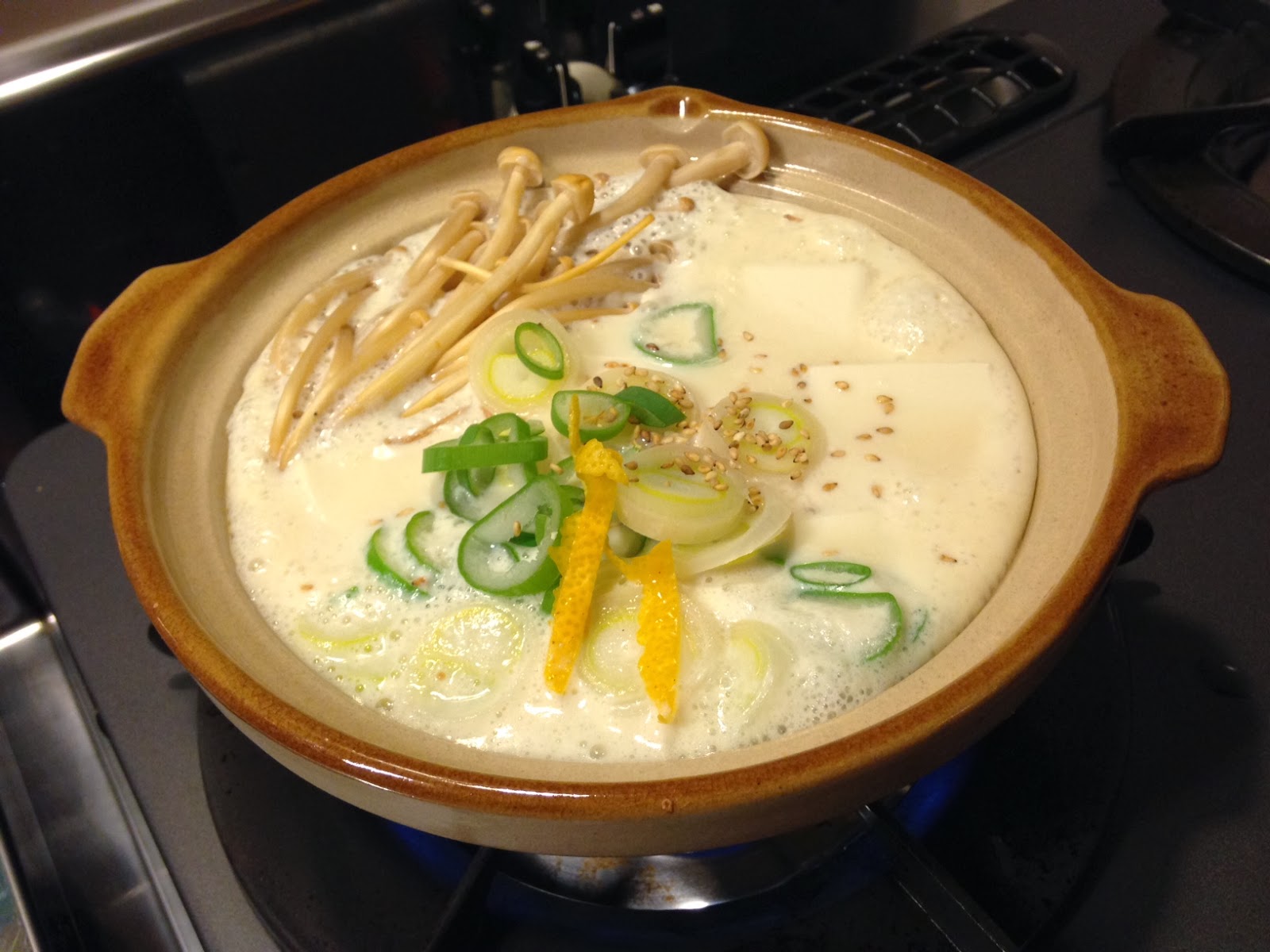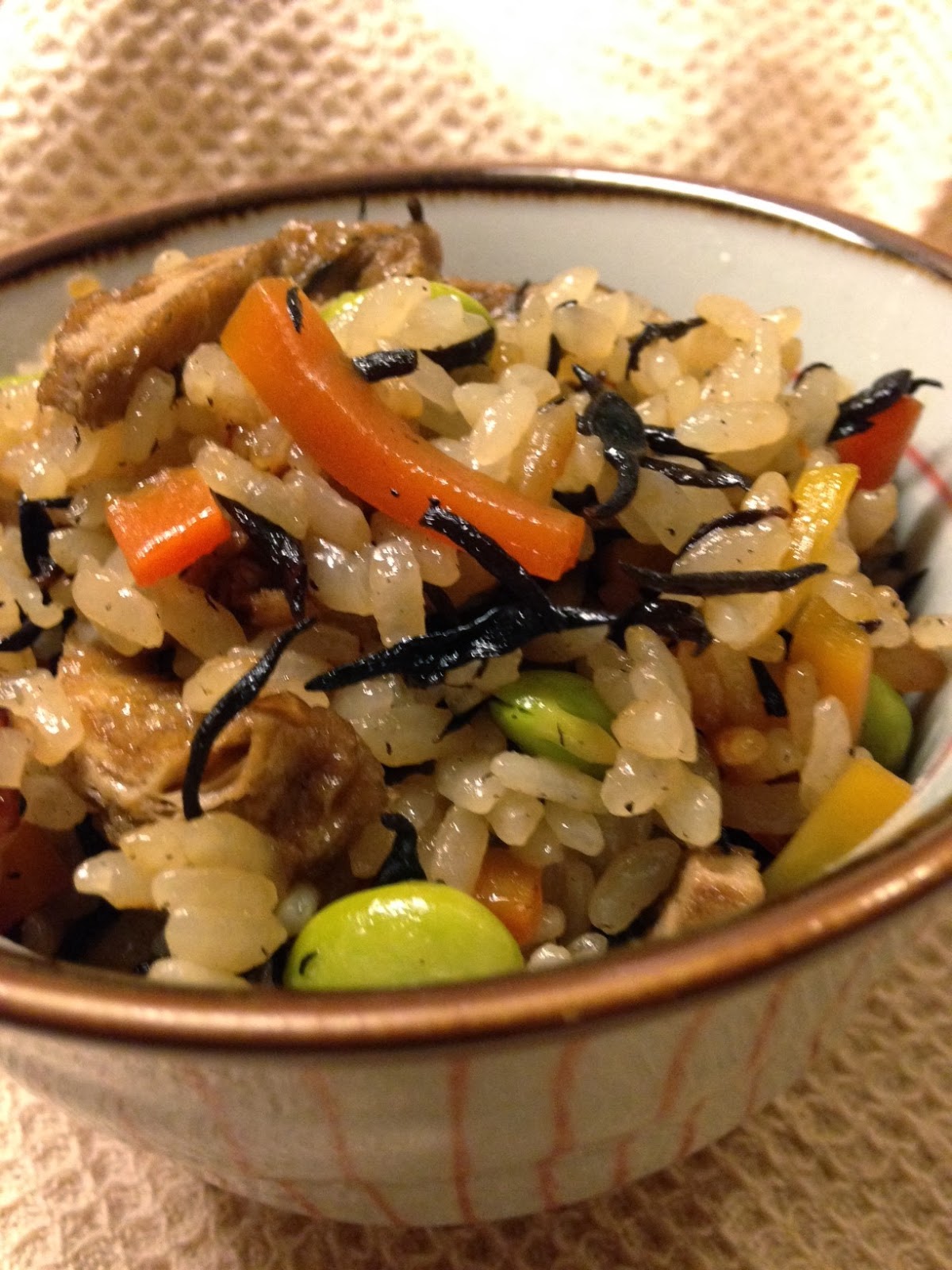Tofu Nabe
 |
| You can't really see the tofu but it's there, promise. |
This is my no time nabe. Very few ingredients, and almost no prep time required. I've been pretty busy since the new year started, so this recipe has been a kind of an okazu "pinch hitter" for me. Not many think of tofu as filling but, cooked in soy milk, this nabe is surprisingly satisfying.
Until I came to Japan, I didn't care much either way about tofu. Maybe because back home the kind of tofu commonly available at the grocery store or at Asian supermarkets was always Chinese-style tofu. This variety is harder and more crumbly than Japanese varieties. While Chinese-style tofu is great for rigorous cooking, it isn't something you'd eat uncooked with a bit of shoyu and wasabi, as it is often enjoyed here. There are popular western-brands of tofu geared towards vegans, but I find they cost more and don't taste as nice as what I can buy here for 70¢.
Japanese-style tofu, or silken tofu as it's sometimes called, is available in soft, medium and firm varieties. The texture and appearance is smooth and glossy, with an almost creamy consistency as you're eating it.
1 cake of medium firmness silken tofu
1/2 package of enokitake
1/2 naganegi
1 cup soy milk
1/3 cup dashi stock
2 tbsp sake
salt to taste
a few strands of yuzu peel
toasted sesame seeds
Serves 2
Time: 15 mins.
Pour the soy milk, dashi, and sake into a nabe or clay pot. Heat liquids over medium heat. Add salt to season. As this heats, make sure the stock doesn't boil over as this will cause the soy milk to look kind of grainy.
Cut the tofu into 2 inch cubes. Clean and cut the ends off the enokitake. Thinly slice the naganegi. Add all of these to the pot with some yuzu peel and cook gently until the vegetables have softened.
Ladle into small bowls and top with toasted sesame.


Comments
Post a Comment